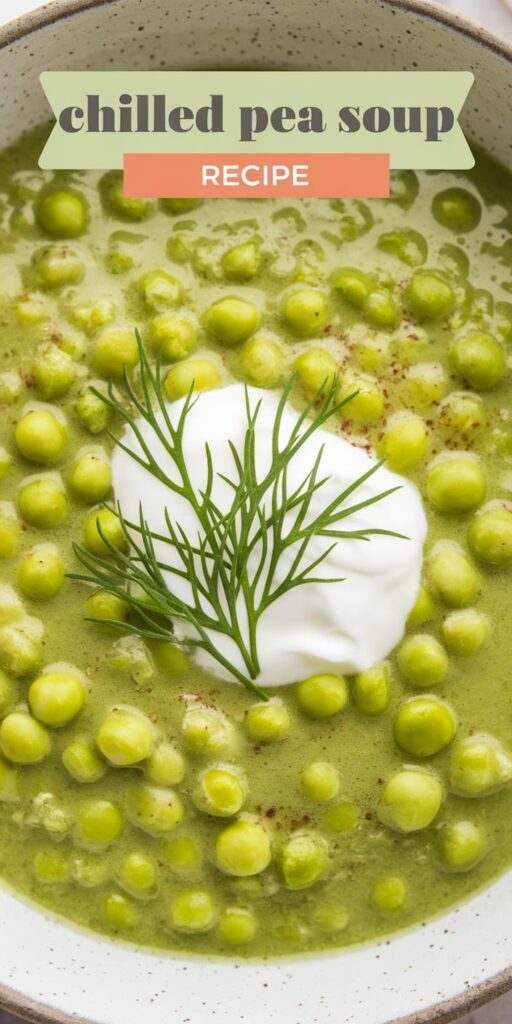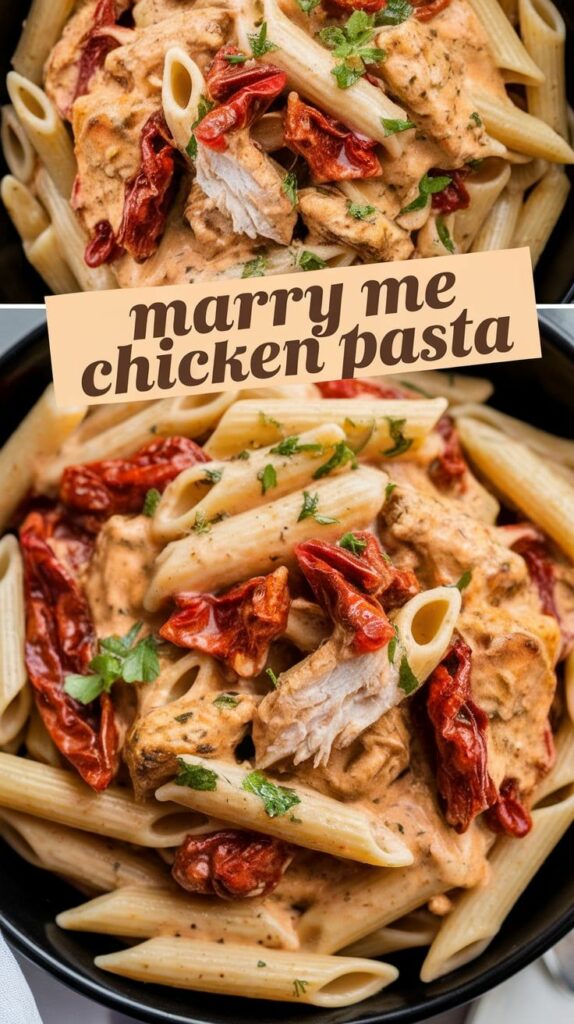Summer calls for light, vibrant dishes that cool and refresh. My chilled pea soup recipe delivers exactly that—a garden-fresh experience packed with flavor and nutrition. This refreshing summer dish transforms simple ingredients into an elegant culinary creation that takes just minutes to prepare.
Green, creamy, and delightfully smooth, this chilled pea soup recipe captures the essence of seasonal eating. I’ll walk you through creating a soup that’s not just a meal but a celebration of summer’s bounty. Whether you’re hosting a dinner party or craving a quick lunch, this recipe promises to impress with its vivid color and clean, crisp taste.
Fresh peas are the star of this recipe, bringing natural sweetness and vibrant green hues to your table. Each spoonful offers a refreshing summer dish that’s both nutritious and incredibly satisfying. Get ready to transform simple ingredients into a restaurant-worthy soup that’s sure to become a warm-weather favorite.

The Art of Making Perfect Chilled Pea Soup Recipe
Dive into the world of cold soups, where culinary creativity meets refreshing flavors. My journey with perfect chilled pea soup began with a passion for transforming simple ingredients into extraordinary dishes that tantalize the taste buds and cool down summer days.
History of Cold Soups in Fine Dining
Cold soups have a rich culinary heritage that spans centuries. From European gazpachos to delicate Russian chilled borscht, these dishes represent a sophisticated approach to summer cuisine. Chefs in high-end restaurants have long celebrated the art of cold soups, elevating simple ingredients into gourmet experiences.
Benefits of Fresh vs. Frozen Peas
When preparing a perfect chilled pea soup, the choice between fresh peas and frozen peas can make a significant difference. Let’s break down the pros and cons:
- Fresh Peas:
- Peak flavor and sweetness
- Maximum nutritional value
- Ideal when in season
- Frozen Peas:
- Consistent quality year-round
- Convenient and time-saving
- Typically flash-frozen at peak ripeness
Why This Recipe Works
My chilled pea soup recipe strikes the perfect balance between simplicity and sophistication. By carefully selecting ingredients and using precise techniques, I’ve created a cold soup that captures the essence of fresh peas while delivering a smooth, elegant texture.
| Ingredient Quality | Flavor Impact | Preparation Technique |
|---|---|---|
| Fresh/Frozen Peas | Sweet, Vibrant | Blending Technique |
| Herbs | Aromatic Depth | Careful Chopping |
| Cooling Method | Refreshing Texture | Proper Chilling |
Essential Ingredients for Garden-Fresh Flavor
Creating a delicious chilled pea soup starts with selecting the right garden-fresh ingredients. My recipe focuses on bringing out the vibrant flavors of fresh peas while keeping the ingredient list simple and straightforward.
- Fresh green peas (2 pounds) – the star of our pea soup ingredients
- Chicken or vegetable stock (4 cups)
- Fresh mint leaves
- Heavy cream
- Unsalted butter
- Sea salt
- Fresh cracked black pepper
The quality of your garden-fresh ingredients makes all the difference in this chilled soup. I recommend using freshly picked peas when possible. Local farmers’ markets are an excellent source for peak-of-season produce that will elevate your soup’s flavor profile.
For those unable to find fresh peas, high-quality frozen peas work as an excellent alternative. When selecting peas, look for bright green color and firm texture. Avoid peas that appear yellowish or have signs of wilting.
Dietary considerations are important too. For a vegan version, swap chicken stock with vegetable stock and use coconut cream instead of heavy cream. The beauty of this recipe lies in its flexibility and ability to adapt to different nutritional needs.
Kitchen Equipment You’ll Need
Creating the perfect chilled pea soup requires the right kitchen equipment for soup. I’ll guide you through the essential tools that will transform your cooking experience and help you craft a silky-smooth, restaurant-worthy dish.
Blender Options for Smooth Results
When selecting a blender for soup, you’ll want to consider power and performance. I recommend these top blender for soup choices:
- High-powered countertop blenders (Vitamix or Blendtec)
- Immersion blenders for quick and easy blending
- Professional-grade models with multiple speed settings
The right blender ensures your chilled pea soup achieves that coveted velvety texture. Look for models with at least 1000 watts of power to break down ingredients completely.
Soup Storage Containers and Serving Bowls
Proper soup storage containers are crucial for maintaining freshness and flavor. I suggest using:
- Glass containers with airtight lids
- BPA-free plastic containers
- Ceramic serving bowls with wide rims
Temperature Control Tools
Keeping your chilled pea soup at the perfect temperature requires a few key tools:
- Instant-read digital thermometer
- Large ice bath for rapid cooling
- Refrigerator with consistent temperature settings
By investing in quality kitchen equipment, you’ll elevate your chilled pea soup from good to extraordinary. Each tool plays a critical role in creating a professional-level culinary experience right in your own kitchen.
Step-by-Step Preparation Method
Learning how to make chilled pea soup requires careful attention to detail and a methodical approach. I’ll walk you through the pea soup preparation process to ensure a delicious and refreshing result.
- Gather and Prep Ingredients
- Wash fresh peas thoroughly
- Chop onions and garlic finely
- Measure out herbs and seasonings
- Cooking Base
- Sauté onions until translucent
- Add garlic and cook for 1 minute
- Introduce peas to the pan
- Blending Process
- Transfer cooked ingredients to blender
- Add vegetable broth
- Blend until smooth and creamy
- Chilling and Finishing
- Strain soup for extra smoothness
- Refrigerate for at least 2 hours
- Taste and adjust seasoning
The key to an exceptional chilled pea soup is maintaining a vibrant green color and achieving a silky-smooth texture. I recommend using the freshest peas possible and blending thoroughly to create a luxurious consistency.
Pro tip for pea soup preparation: If using frozen peas, briefly blanch them before blending to enhance their bright green color and fresh flavor. This small step can dramatically improve your soup’s overall taste and appearance.
Garnishing and Serving Suggestions
Elevating your chilled pea soup from good to extraordinary requires thoughtful pea soup garnishes and serving techniques. The right presentation can transform a simple soup into a culinary masterpiece that delights both the eyes and the palate.
Creative Toppings to Enhance Flavor
When serving chilled soup, the garnishes play a crucial role in adding texture and depth. I recommend these exciting pea soup garnishes:
- Crispy pancetta crumbles
- Fresh mint leaves
- Toasted pumpkin seeds
- Dollop of herbed crème fraîche
- Microgreens for a delicate finish
Temperature and Timing Tips
Serving chilled soup requires precision. Keep your soup refrigerated until 10-15 minutes before serving. The ideal temperature range is between 40-45°F, which maintains the soup’s refreshing quality without losing its nuanced flavors.
Food Pairings for Pea Soup
Selecting the right food pairings for pea soup can elevate your dining experience. I suggest these complementary options:
- Light summer salads
- Grilled white fish
- Crusty artisan bread
- Chilled white wine like Sauvignon Blanc
Storage Tips and Make-Ahead Instructions
My chilled pea soup is perfect for make-ahead soup recipes that save time and energy. I recommend storing the soup in airtight glass containers with tight-fitting lids to maintain its fresh flavor and vibrant green color. Glass containers prevent flavor absorption and keep the soup tasting just as delicious as when first prepared.
When storing chilled soup, always refrigerate within two hours of preparation. The soup will stay fresh for 3-4 days in the refrigerator at 40°F or below. I suggest using clear containers so you can easily see the soup’s condition and detect any changes in texture or color. Before serving, give the soup a quick stir to redistribute any settled ingredients.
Freezing works well for this recipe. Pour the soup into freezer-safe containers, leaving about an inch of space at the top for expansion. The soup can be frozen for up to one month. When you’re ready to enjoy it, thaw the soup overnight in the refrigerator and whisk thoroughly to restore its smooth consistency before serving.
Pro tip for make-ahead soup recipes: prepare the soup base in advance and add fresh herbs just before serving to maintain the brightest flavors. This strategy ensures your chilled pea soup tastes like it was just prepared, even when made days earlier.



